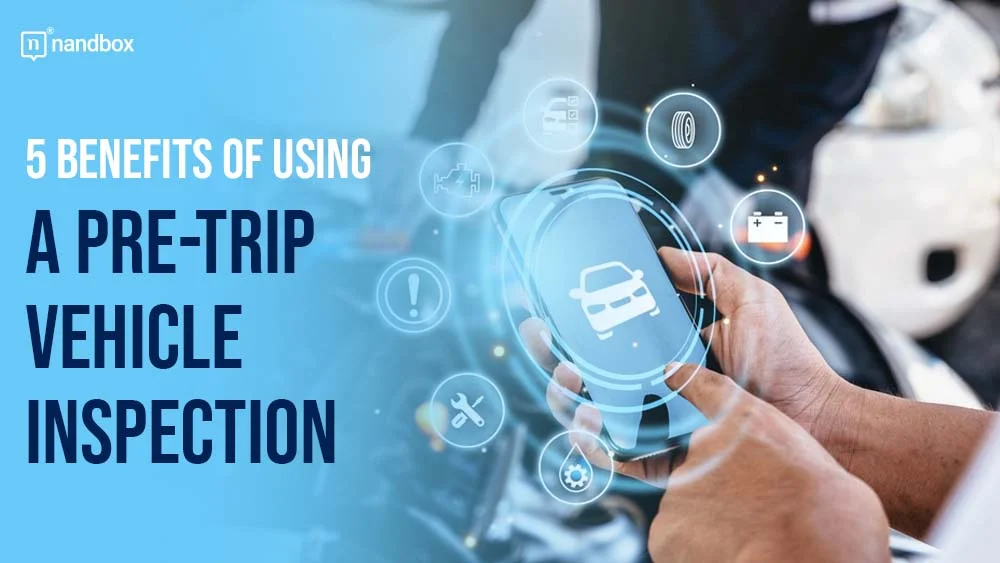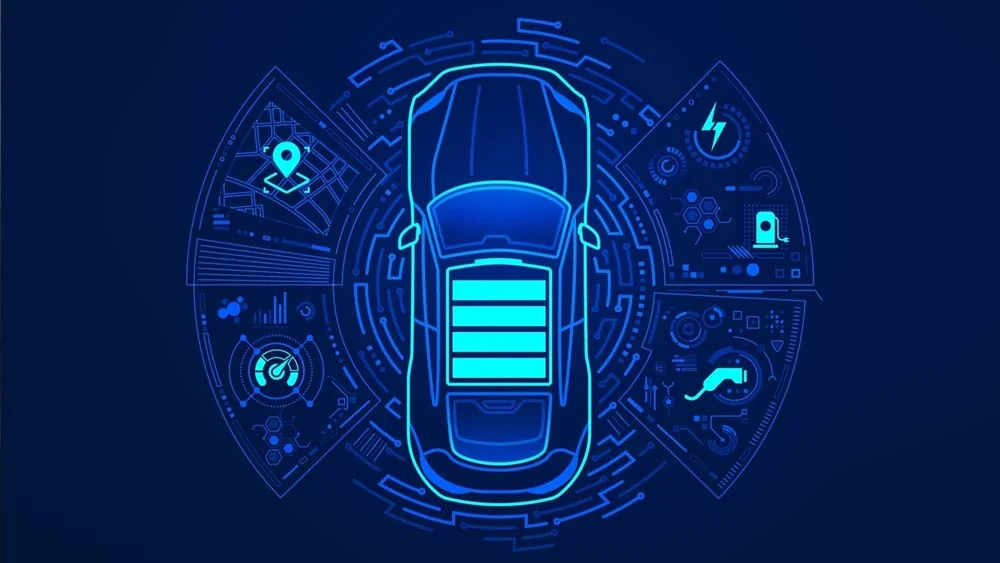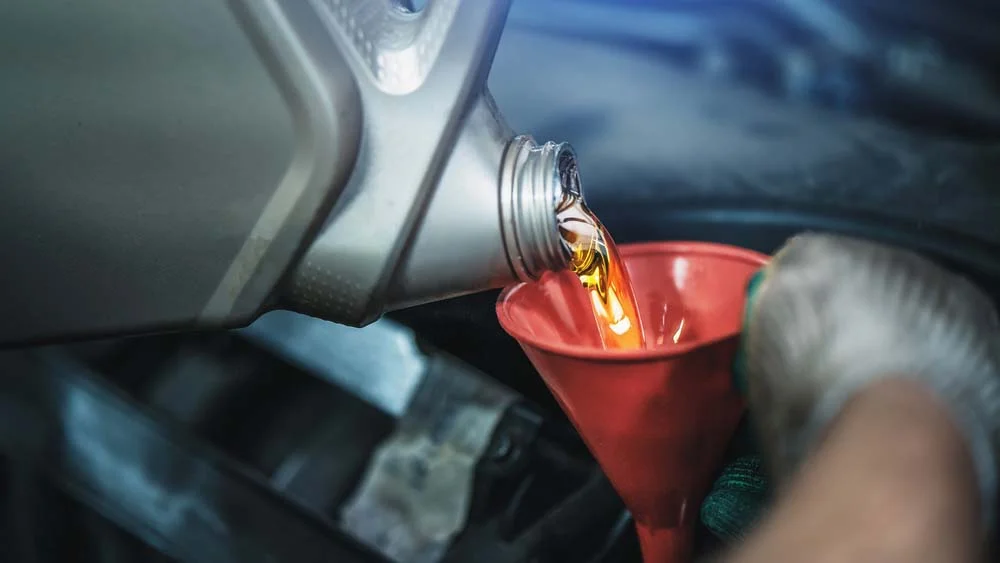Let’s try to imagine this chain of events: you’re cruising down the highway, your delivery humming along, when suddenly, you hear a concerning clunk. You pull over to discover a flat tire—not just any flat, but one caused by a severely worn tread that could have been spotted with a simple pre-trip check. Now you’re stranded, facing hours of delay, a missed delivery window, and a tremendously expensive fine for driving with unsafe tires. A big ouch indeed.
Well, this scenario can highlight why pre-trip vehicle inspections are non-negotiable for any fleet, big or small. But let’s face it, relying on memory alone can be risky. In situations like these, having a pre-trip vehicle inspection checklist can be extremely helpful. It’s your first line of defense against unexpected breakdowns, costly repairs, and potential safety hazards, ensuring no critical detail is overlooked.
So, let’s start with the benefits you need to know—shall we?
Benefit 1: Enhanced Safety
It’s time to talk about safety. Because of its significance, it is essential that it not be treated as if it were merely a catchphrase. This is because it is the foundation upon which any fleet operation that is successful is built. And guess what? Your pre-trip inspection checklist plays a starring role in keeping your drivers, your vehicles, and everyone else on the road safe.
As we already stated in the beginning, a vehicle malfunction can quickly turn a routine trip into a disaster. According to the Federal Motor Carrier Safety Administration (FMCSA), vehicle defects contribute to a significant number of accidents each year. Faulty brakes, worn tires, and steering problems—these aren’t minor inconveniences; they’re potential accidents waiting to happen.
That’s where your trusty checklist comes in. By carefully checking these important parts before hitting the road, you are effectively getting rid of potential dangers. And with tools like Fleetio, you can ease this entire process, making it easier than ever to manage and track your pre-trip inspections.
Here’s a quick rundown of what to look for:
- Brakes: Are they responsive? Any unusual noises or vibrations?
- Tires: Check for wear, proper inflation, and any signs of damage.
- Steering: Does the steering wheel feel loose or unresponsive?
- Lights: Ensure all headlights, taillights, and turn signals are functioning correctly.
- Fluid Leaks: Look for any signs of leaks under the vehicle.
Remember, a few minutes spent inspecting these key areas can prevent a whole lot of heartache down the road. By catching these issues early on, you’re not only protecting your drivers and cargo but also contributing to safer roads for everyone.
Benefit 2: Improved Vehicle Lifespan
Want to keep your vehicles running like well-oiled machines for years to come? Then it’s time to shift your perspective on vehicle maintenance. Don’t just react to problems; anticipate them!
Think of your vehicles as finely tuned athletes. To perform at their best, they need consistent care and attention. Ignoring those seemingly minor issues—a strange noise, a sluggish response, a flickering light—is like ignoring a nagging injury. It might not seem like a big deal initially, but over time, it can escalate into a major problem that sidelines your star player.
Imagine a tiny crack in your windshield. Sure, it might seem minor at first, but with every bump and jolt, that crack can spread, compromising the structural integrity of the entire windshield. In the long run, you will be required to replace the entire thing, which is a much more expensive solution than a straightforward repair in the beginning.
The same goes for your vehicles. A minor oil leak might not seem like a big deal, but left unchecked, it can starve your engine of lubrication, leading to catastrophic failure. Worn brake pads can prematurely wear down your rotors, turning a relatively inexpensive fix into a major expense. And don’t even get me started on what happens when you ignore that ominous clunking sound coming from your suspension!
The point is this: regular maintenance is the key to extending the lifespan of your vehicles. By addressing minor issues promptly, you’re preventing them from snowballing into major repairs that can put your vehicles out of commission and drain your budget. It’s like investing in a long and healthy career for your fleet, ensuring they stay on the road and in top form for years to come.
Benefit 3: Increased Efficiency and Productivity
Time is money, right? And in fleet management, that statement couldn’t be truer. Every minute your vehicle spends off the road translates to lost productivity, missed deadlines, and potentially, unhappy customers.
Imagine this scenario: A delivery truck, on its way to a very important customer, suddenly breaks down due to a malfunctioning fuel pump. The driver is stranded, the delivery is delayed, and the client is left frustrated. Now, you’re not only dealing with repair costs but also the potential loss of a valuable customer.
These unexpected breakdowns trigger a domino effect of disruptions. Drivers are left idle, schedules are thrown into disarray, and your bottom line takes a hit. It’s like a well-choreographed dance routine suddenly interrupted by a misplaced step, throwing the entire performance off balance.
But here’s the thing: many of these breakdowns can be prevented with a proactive approach to maintenance. Think of it like visiting the doctor for regular checkups. You might not feel sick, but those checkups can detect potential health issues before they become major problems.
Benefit 4: Importance of vehicles in technology
The same applies to your vehicles. Regular maintenance, like checking tire pressure, fluid levels, and brake functionality, can identify and address minor issues before they escalate into costly breakdowns. This is where technology, especially mobile apps and real-time monitoring, plays a critical role. Through mobile apps and connected devices, fleet managers and drivers can access real-time vehicle data directly from their smartphones or tablets. Sensors in the vehicle monitor vital systems—like engine health, tire pressure, and battery status—and send alerts when maintenance or repairs are needed.
These mobile apps often come with diagnostic capabilities, allowing fleet managers to assess issues remotely and schedule repairs proactively, even before the vehicle breaks down. With instant notifications and updates on vehicle performance, issues that might have otherwise gone unnoticed can now be addressed early, preventing disruptions and delays.
By integrating these mobile technologies into your fleet management system, you create an environment where minor issues are detected and addressed before they escalate. It’s like fine-tuning your instruments before a concert, ensuring a flawless performance and avoiding any off-key surprises.
So, if you’re serious about boosting efficiency and productivity, make regular maintenance and real-time monitoring a non-negotiable part of your fleet management strategy. With the power of mobile apps and predictive maintenance technology, you’ll keep your vehicles on the road, your operations running smoothly, and your customers singing your praises.
Benefit 5: Reduced Maintenance Costs
Talk about ways to save money. Because in the realm of fleet management, keeping those maintenance costs under control is comparable to discovering a treasure chest that has been hidden under the ground. And guess what? You hold the key!
Think of it like this: regular maintenance is like catching a tiny gremlin in your engine before it wreaks havoc and throws a wild party with your pistons. Sure, evicting that gremlin might cost you a few bucks now, but it’s a whole lot cheaper than rebuilding your entire engine after its wild shenanigans.
Those seemingly minor issues, if left unaddressed, can quickly escalate into major money-sucking monsters. Replacing worn brake pads is a walk in the park compared to dealing with warped rotors and seized calipers, which can feel like wrestling a grumpy octopus.
Benefit 6: The Importance of Regular Oil Changes
And don’t even get me started on the importance of regular oil changes. Skipping them is like depriving your engine of its lifeblood, leading to a catastrophic meltdown that’ll make your wallet weep. It’s like trying to run a marathon on an empty stomach—you might start strong, but you’ll crash and burn before reaching the finish line.
On the other hand, here’s the kicker: taking a preventative approach to maintenance can actually make you friends in the world of auto repair. When you show your mechanic that you’re serious about keeping your vehicles in top shape, they’re more likely to roll out the red carpet for you with better rates and priority service. It’s like building a solid reputation with your favorite bartender—the more they see you taking care of yourself, the more likely they are to slip you a free drink now and then.
For this reason, if you want to give your budget a significant boost, you should make it a non-negotiable component of your fleet management strategy to perform routine vehicle inspections. It’s like investing in a money tree that keeps on giving.
Benefit 7: Improved Compliance and Record-Keeping
Paperwork is not the most exciting aspect of fleet management. But when it comes to staying on the right side of the law and avoiding fines. Those records and compliance checks are essential. And this is why your pre-trip vehicle inspection checklist is your ally in this arena.
Think of those regulations as the rules of the road. Ensuring everyone plays fair and keeps things safe. And your pre-trip checklist is your proof that you’re not cutting any corners. By diligently completing and documenting these checks. You’re building a solid record of compliance that can be your saving grace in case of an audit or insurance claim. It’s like having a detailed logbook of your travels, proving you’ve taken all the necessary precautions.
But let’s be honest, nobody wants to drown in a sea of paper checklists. That’s where digital checklists and fleet management software come in. These tools streamline the entire process, making it easier than ever to record, track, and retrieve inspection data. It’s like having a personal assistant who keeps all your important documents organized and accessible at your fingertips.
So, simplify compliance and record-keeping with pre-trip checklists and digital tools. It’s a smart move that can save you time, headaches, and potentially a lot of money.
Ready to Take Your Fleet to the Next Level?
Not only is it a good idea to check your vehicles before a trip, but every fleet needs to do it. Your chances of success will go up in more than one way if you do these checks every day.
Remember those five key benefits? Enhanced safety, improved vehicle lifespan, increased efficiency, reduced maintenance costs, and simplified compliance. That’s a winning combination that can transform your fleet operations.
So, what are you waiting for? Put together a pre-trip inspection list right now and see how it changes your fleet, your drivers, and your bottom line. The nandbox App Builder simplifies vehicle inspection processes by enabling customizable mobile apps that streamline reporting and enhance fleet management efficiency.






